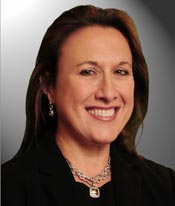Dental Implant Team Combined Programme - Thursday Morning
0800 |
|
0900 |
Opening Ceremony |
0915 |
Moderator: Dr Simon Wright, ADI Committee
 Anita Daniels is a registered dental hygienist with clinical experience in periodontics and implant dentistry. She has lectured extensively internationally and throughout the United States on periodontics and all aspects of implant dentistry. Ms. Daniels served as the Editor-in-Chief of the Journal of Practical Hygiene (Montage Media Corporation) until 2006. She also served as a consultant to the dental industry, applying her technique, educational, podium and writing expertise to enhance her clients’ educational approach. She has developed educational curricula for dental, dental hygiene, dental assistant and implant coordinator audiences. Ms. Daniels is an Adjunct Clinical Instructor at the University of Miami, Department of Dental Implants, School of Medicine. She is the first dental hygienist to be granted Active Member status in the Academy of Osseointegration, and is actively involved in other professional dental hygiene organizations. Ms. Daniels has written numerous articles for dental and dental hygiene publications. She currently serves as Director of Professional Communications for BIOMET 3i, where she is Editor of the Journal of Implant and Reconstructive Dentistry, a BIOMET 3i Publication.
All members of the dental team play an important role in educating patients about available treatment options. For over two decades, as implant dentistry has evolved to be the norm in the treatment planning process and not the exception, clinicians have evolved from having patients sign a consent form for implant treatment, to having patients sign an “informed refusal”, stating that they were presented with implant treatment as the best option for their edentulism, but did not choose this option for whatever reason, whether it was bias, cost, etc. Today, in our very litigious society, patients should be given at least one implant option for treatment of their edentulism—whether they are missing one tooth or are edentulous or partially edentulous. Every patient deserves the right to hear his/her options for treatment of their tooth loss. Patients are motivated to change their smiles for various reasons: sometimes social pressures, family pressures, or personal reasons. Dental professionals should be knowledgeable of the modality of treatment and treatment sequencing for implant therapy so they can educate their patients about this treatment option. One cannot make a judgment call as to whether or not patients may be able to afford implant treatment by assessing their appearance or socio-economic status, and use this as a deciding factor of whether or not to speak to patients about implant treatment as an option. This programme will guide participants through the implant treatment process including identifying the role of each member of the staff. Programme Topics:
Programme Objectives:
Programme Outline:
|
1045 |
Tea/Coffee & Exhibition |
1115 |
Session resumes |
| 1300 | Close of Session |
1300 |
Buffet Lunch & Exhibition |
1415 |
For the afternoon break into three parallel sessions: |
